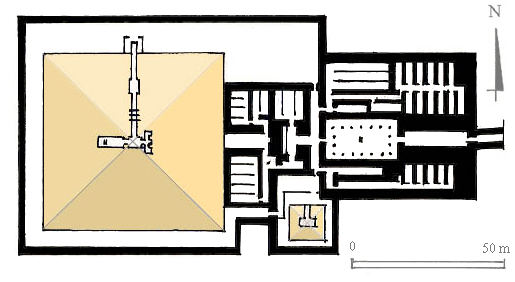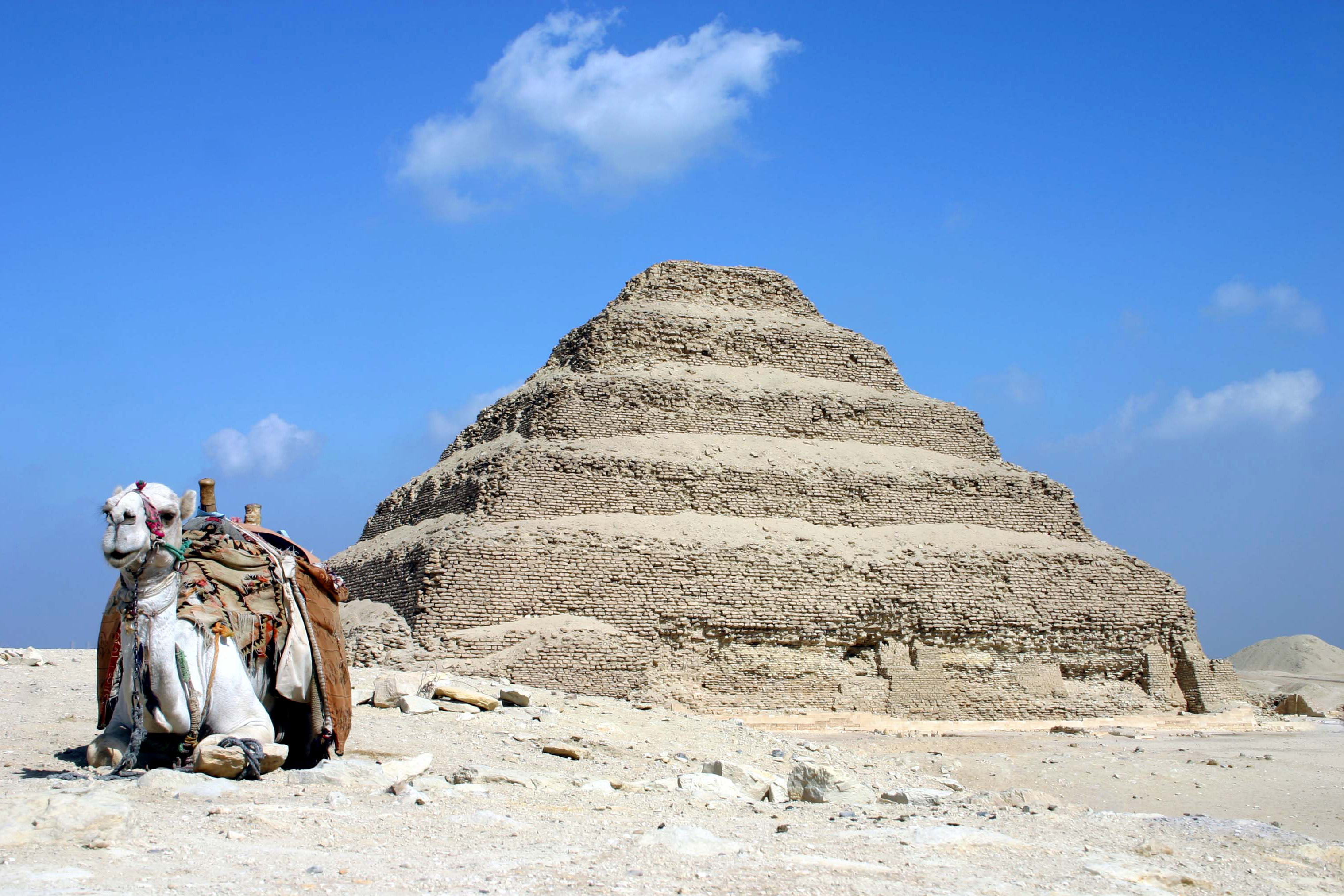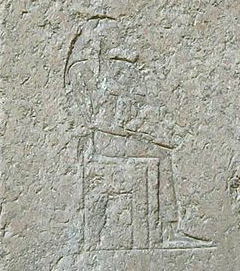|
Khaemweset
Prince Khaemweset (also translated as Khamwese, Khaemwese or Khaemwaset or Setne Khamwas) (c. 1281 BCE - 1225 BCE) was the fourth son of Ramesses II and the second son by his queen Isetnofret. His contributions to Egyptian society were remembered for centuries after his death.Aidan Dodson & Dyan Hilton, ''The Complete Royal Families of Ancient Egypt'', Thames & Hudson (2004), p. 170-171 Khaemweset has been described as "the first Egyptologist" due to his efforts in identifying and restoring historic buildings, tombs and temples. Life According to historian Miriam Lichtheim: :Here I should like to stress that Prince Setne Khamwas, the hero of the two tales named for him, was a passionate antiquarian. The historical prince Khamwas, was the fourth son of King Ramses II, had been high priest of Ptah at Memphis and administrator of all the Memphite sanctuaries. In that capacity he had examined decayed tombs, restored the names of their owners, and renewed their funerary cults. Po ... [...More Info...] [...Related Items...] OR: [Wikipedia] [Google] [Baidu] |
Serapeum Of Saqqara
The Serapeum of Saqqara was the ancient Egyptian burial place for sacred bulls of the Apis cult at Memphis. It was believed that the bulls were incarnations of the god Ptah, which would become immortal after death as ''Osiris-Apis'', a name which evolved to ''Serapis ('') in the Hellenistic period, and ''Userhapi'' () in Coptic. It is one of the animal catacombs in the Saqqara necropolis, which also contains the burial vaults of the mother cows of the Apis, the Iseum. Over a timespan of approximately 1400 years, from the New Kingdom of Egypt to the end of the Ptolemaic Period, at least sixty Apis are attested to have been interred at the Serapeum. For the earliest burials, isolated tombs were constructed. As the cult gained importance, underground galleries were dug that connected subsequent burial chambers. Above ground, the main temple enclosure was supplemented by shrines, workshops, housing and administrative quarters. From the Late Period onward, most Apis were bu ... [...More Info...] [...Related Items...] OR: [Wikipedia] [Google] [Baidu] |
Pyramid Of Userkaf
The pyramid complex of Userkaf was built c. 2490 BC for the king Userkaf, founder of the Fifth Dynasty of Egypt, 5th Dynasty of Egypt (c. 2494–2345 BC). It is located in the Egyptian pyramids, pyramid field at Saqqara, on the north-east of the Pyramid of Djoser, step pyramid of Djoser. Constructed in dressed stone with a core of rubble, the pyramid is now ruined and resembles a conical hill in the sands of Saqqara.Mark Lehner, ''The Complete Pyramids'', Thames & Hudson, , p. 140 For this reason, it is known locally as ''El-Haram el-Maharbish'', the "Heap of Stone",Jean-Phillipe Lauer (in French): ''Saqqarah, Une vie, Entretiens avec Phillipe Flandrin'', Petite Bibliotheque Payot 107, 1988, and was recognized as a royal pyramid by western archaeologists in the 19th century. Userkaf's pyramid is part of a larger mortuary complex comprising a mortuary temple, an offering chapel and a cult pyramid as well as separate pyramid and mortuary temple for Userkaf's wife, queen N ... [...More Info...] [...Related Items...] OR: [Wikipedia] [Google] [Baidu] |
Saqqara
Saqqara ( : saqqāra[t], ), also spelled Sakkara or Saccara in English , is an Egyptian village in the markaz (county) of Badrashin in the Giza Governorate, that contains ancient burial grounds of Egyptian royalty, serving as the necropolis for the ancient Egyptian capital, Memphis, Egypt, Memphis. Saqqara contains numerous pyramids, including the Pyramid of Djoser, sometimes referred to as the Step Pyramid, and a number of mastaba tombs. Located some south of modern-day Cairo, Saqqara covers an area of around . Saqqara contains the oldest complete stone building complex known in history, the Pyramid of Djoser, built during the Third Dynasty of Egypt, Third Dynasty. Another sixteen Egyptian kings built pyramids at Saqqara, which are now in various states of preservation. High officials added private funeral monuments to this necropolis during the entire History of ancient Egypt, Pharaonic period. It remained an important complex for non-royal burials and cult ceremonies for more ... [...More Info...] [...Related Items...] OR: [Wikipedia] [Google] [Baidu] |
Pyramid Of Unas
The pyramid of Unas (Egyptian language, Egyptian: ''Nfr swt Wnjs'' "Beautiful are the places of Unas") is a smooth-sided pyramid built in the 24th century BC for the Egyptian pharaoh Unas, the ninth and final king of the Fifth Dynasty of Egypt, Fifth Dynasty. It is the smallest Old Kingdom of Egypt, Old Kingdom pyramid, but significant due to the discovery of Pyramid Texts, spells for the king's afterlife incised into the walls of its subterranean chambers. Inscribed for the first time in Unas's pyramid, the tradition of Ancient Egyptian funerary texts, funerary texts carried on in the pyramids of subsequent rulers, through to the end of the Old Kingdom, and into the Middle Kingdom of Egypt, Middle Kingdom through the Coffin Texts that form the basis of the ''Book of the Dead''. Unas built his pyramid between the complexes of Buried Pyramid, Sekhemket and Step Pyramid of Djoser, Djoser, in North Saqqara. Anchored to the valley temple at a nearby lake, a long causeway was construc ... [...More Info...] [...Related Items...] OR: [Wikipedia] [Google] [Baidu] |
Nyuserre Ini
Nyuserre Ini (also Niuserre Ini or Neuserre Ini; in Greek language, Greek known as Rathurês, ''Ῥαθούρης''; died 2422 BC) was an Ancient Egyptian pharaoh, king, the sixth ruler of the Fifth dynasty of Egypt, Fifth Dynasty during the Old Kingdom period. He is credited with a reign of 24 to 36 years depending on the scholar, and likely lived in the second half of the 25th century BCE. Nyuserre was the younger son of Neferirkare Kakai and queen Khentkaus II, and the brother of the short-lived king Neferefre. He may have succeeded his brother directly, as indicated by much later historical sources. Alternatively, Shepseskare may have reigned between the two as advocated by Miroslav Verner, albeit only for a few weeks or months at the most. The relation of Shepseskare with Neferefre and Nyuserre remains highly uncertain. Nyuserre was in turn succeeded by Menkauhor Kaiu, who could have been his nephew and a son of Neferefre. Nyuserre was the most prolific builder of his dynas ... [...More Info...] [...Related Items...] OR: [Wikipedia] [Google] [Baidu] |
Apis (deity)
In ancient Egyptian religion, Apis or Hapis, alternatively spelled Hapi-ankh, was a sacred bull or multiple sacred bulls Ancient Egyptian religion#Animal cults, worshiped in the Memphis, Egypt, Memphis region, identified as the son of Hathor, a primary deity in the pantheon (religion), pantheon of ancient Egypt. Initially, he was assigned a significant role in her worship, being sacrificed and reborn. Later, Apis also served as an intermediary between humans and other powerful deities (originally Ptah, later Osiris, then Atum). The Apis bull was an important sacred animal to the ancient Egyptians. As with the other sacred beasts, Apis' importance increased over the centuries. During colonization of the conquered Egypt, Greek and Roman authors had much to say about Apis, the markings by which the black calf was recognized, the manner of his conception by a sunlight, ray from heaven, his house at Memphis (with a court for his deportment), the mode of prognostication from his actio ... [...More Info...] [...Related Items...] OR: [Wikipedia] [Google] [Baidu] |
Egyptology
Egyptology (from ''Egypt'' and Ancient Greek, Greek , ''wiktionary:-logia, -logia''; ) is the scientific study of ancient Egypt. The topics studied include ancient Egyptian History of Egypt, history, Egyptian language, language, Ancient Egyptian literature, literature, Ancient Egyptian religion, religion, Ancient Egyptian architecture, architecture and Art of ancient Egypt, art from the 5th millennium BC until the end of its native religious practices in the 4th century AD. History First explorers The earliest explorers of ancient Egypt were the ancient Egyptians themselves. Inspired by a dream he had, Thutmose IV led an excavation of the Great Sphinx of Giza and inscribed a description of the dream on the Dream Stele. Less than two centuries later, Prince Khaemweset, fourth son of Ramesses II, would gain fame for identifying and restoring historic buildings, tombs and temples, including pyramids; and has subsequently been described as the first Egyptologist. Classical Antiqu ... [...More Info...] [...Related Items...] OR: [Wikipedia] [Google] [Baidu] |
Pyramid Of Djoser
The pyramid of Djoser, sometimes called the Step Pyramid of Djoser or Step Pyramid of Horus Netjerikhet, is an archaeological site in the Saqqara necropolis, Egypt, northwest of the ruins of Memphis.Bard, Kathryn A., and Jean-Philipee Lauer, eds. 1999. "Saqqara, pyramids of the 3rd Dynasty" ''Encyclopedia of the Archaeology of Ancient Egypt''. London: Routledge. 859 It is the first Egyptian pyramid to be built. The 6-tier, 4-sided structure is the earliest colossal stone building in Egypt. It was built in the 27th century BC during the Third Dynasty for the burial of Pharaoh Djoser. The pyramid is the central feature of a vast mortuary complex in an enormous courtyard surrounded by ceremonial structures and decoration. The pyramid went through several revisions and redevelopments of the original plan. The pyramid originally stood tall, with a base of and was clad in polished white limestone. As of 1997 the step pyramid (or proto-pyramid) was considered to be the earliest ... [...More Info...] [...Related Items...] OR: [Wikipedia] [Google] [Baidu] |
Pyramid Of Sahure
A pyramid () is a structure whose visible surfaces are triangular in broad outline and converge toward the top, making the appearance roughly a pyramid in the geometric sense. The base of a pyramid can be of any polygon shape, such as triangular or quadrilateral, and its surface-lines either filled or stepped. A pyramid has the majority of its mass closer to the ground with less mass towards the pyramidion at the apex. This is due to the gradual decrease in the cross-sectional area along the vertical axis with increasing elevation. This offers a weight distribution that allowed early civilizations to create monumental structures.Ancient civilizations in many parts of the world pioneered the building of pyramids. The largest pyramid by volume is the Mesoamerican Great Pyramid of Cholula, in the Mexican state of Puebla. For millennia, the largest structures on Earth were pyramids—first the Red Pyramid in the Dashur Necropolis and then the Great Pyramid of Khufu, both in Eg ... [...More Info...] [...Related Items...] OR: [Wikipedia] [Google] [Baidu] |
Mastabat Al-Fir’aun
The Mastabat al-Fir'aun ( Romanised: Maṣṭabat al-Firʿawn), also referred to in Egyptological literature as the ''Mastaba el-Faraun'', ''Mastabat el-Faraun'' or ''Mastabat Faraun'', and meaning "Bench of the Pharaoh") is the grave monument of the ancient Egyptian king Shepseskaf (reign 2510–2503 BC), the last king of the Fourth Dynasty documented to date. It is located in South Saqqara halfway between the Pyramid of Djoser at Saqqara and the pyramids of Sneferu, the founder of the Fourth Dynasty, at Dahshur. The structure is located close to the pyramid of Pepi II, a ruler of the Sixth Dynasty. The stone quarry for the structure is located west of the Red Pyramid of Sneferu. The Mastaba of Shepseskaf Discovery The Mastabat al-Fir’aun was described for the first time by[...More Info...] [...Related Items...] OR: [Wikipedia] [Google] [Baidu] |
Shepseskaf
Shepseskaf (meaning "His Ka is noble") was a pharaoh of ancient Egypt, the sixth and probably last ruler of the fourth dynasty during the Old Kingdom period. He reigned most probably for four but possibly up to seven years in the late 26th to mid-25th century BC. Shepseskaf's relation to his predecessor Menkaure is not entirely certain; he might have been his son or possibly his brother. The identity of his mother is highly uncertain as she could have been one of Menkaure's consorts or queen Khentkaus I or Neferhetepes. Similarly, Shepseskaf's relation to his probable successor on the throne, Userkaf, is not known although in the absence of clear indication of strife at the transition between the fourth and fifth dynasties, Userkaf could well have been his son or his brother. If Shepseskaf was succeeded directly by Userkaf rather than by Thampthis as claimed by some historical sources, then his death marks the end of the fourth dynasty. The transition to the fifth dyna ... [...More Info...] [...Related Items...] OR: [Wikipedia] [Google] [Baidu] |
Crown Prince
A crown prince or hereditary prince is the heir apparent to the throne in a royal or imperial monarchy. The female form of the title, crown princess, is held by a woman who is heir apparent or is married to the heir apparent. ''Crown prince'' as a descriptive term has been used throughout history for the prince who is first-in-line to a throne and is expected to succeed (i.e. the heir apparent), barring any unforeseen future event preventing this. In certain monarchies, a more specific substantive title may be accorded and become associated with the position of heir apparent (e.g. Prince of Wales in the United Kingdom, Prince of Asturias in the Spain, Kingdom of Spain and formerly the Dauphin of France, Dauphin in Kingdom of France, France). In these monarchies, the term crown prince may be used less often than the substantive title (or never). Until the late twentieth century, no modern monarchy adopted a system whereby females would be guaranteed to succeed to the throne ... [...More Info...] [...Related Items...] OR: [Wikipedia] [Google] [Baidu] |










